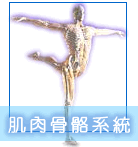History:
11-year-old girl with short limbs and limb deformity
Questions:
1. What are the findings?
2.What is the diagnosis?
Answers:
1. Anteroposterior (AP) and lateral radiographys of the bilateral
upper and lower extremities as well as AP radiographys of pelvis
and CXR:
l Lateral bowing deformity of the radius and ulna (bilateral).
l The ulna is foreshortened with a bulbous end (bilateral).
l An abnormal protrusion from the lateral distal metadiaphysis of
the ulna projects toward the radius, (another small one from medial),
away from the wrist joint (bilateral).
l The radiocarpal joint is dysplastic (bilateral).
l Multiple osseous protrusion compose of cortex and medullar bone
with connection to the cortex and medullary canal of the parent
bone, involving right proximal humerus, bilateral femurs and tibias
as well as iliac bone and right 4th rib.
2. Hereditary multiple osteochondromatosis (HME)
Discussion
The diagnosis in this case is made by recognizing the typical appearance
over the forearms as well as mulitple osteochondroma shown as pedunculated
or sessile pattern. This is a autosomal dominant disorder and is
the most common form of polyostotic bone dysplasia. The individual
osteochondromas (exostoses) are no different as those in patents
with a single osteochondroma. The limbs are affected more than the
spine. Males have more severe manifestation. The number of exostosis
varies from a few to innumerable. They will be seen in the metaphyseal
region and may be pedunculated or sessile. However, they tend to
be larger and the multiplicity often lead to a bizarre appearance
of the metaphysis. In the forearm or lower leg, the lone bone adjacent
to a large osteochondrama often shows contour remodeling or bowing
deformity. Bone deformity also results from a failure of normal
tubulation. Involvement of the forearm is about 80% of the cases.
The so-called "bayonette deformity" is about 30 % of cases
with HME and is related to growth retard of the distal ulna (shortening),
lateral bowing of radius, subluxation of the distal ulnoradial joint,
as well as decreased carpal angle (<117 degree; normal: 130-137
degree). The later is also referred as a variant of "Madelung
deformity" or "pseugomadelung deformity". The forearm
deformity may pose significant problems in terms of appearance and
hand function. Absence of centralized location of the hand with
respect to the forearm results in weakness, and early degenerative
arthropathy may lead to pain. Problems with pronation and supination
are common. The other complications caused by a osteochondroma include
fracture, vascular compromise, neurologic seguelae, bursa formation,
and the most important, malignant transformation, which occur 3-5
% of cases with HME, more than that of cases with solitary ostaochodrama
(1%). Surgical repair may address many of these problems.
Reference
1. M. D. Murphey, J. J. Choi, M. J. Kransdorf, D. J. Flemming, F.
H. Gannon. Imaging of osteochondrama: variants and complications
with refiologic-pathologic correlation.RadioGraphys 2000; 20(5):
1407-34
|


